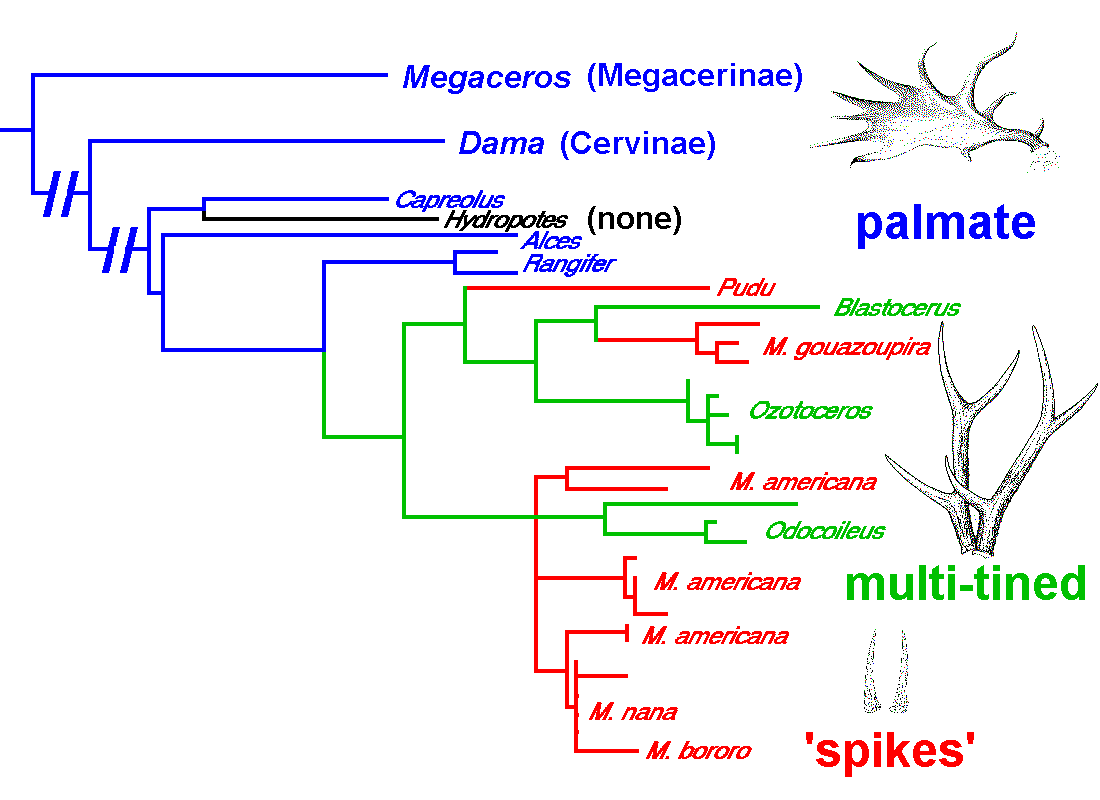
Evolution of antler types in New World deer (Odocoileinae) as inferred from molecular data.

Conventional systematics places the only
antlerless deer, the Chinese water deer (Hydropotes) in a
separate subfamily (Hydropotinae), on the assumption that the antlerless
state represents the ancestral condition for deer generally. Molecular
data indicate instead that Hydropotes is closely related to the
roe deer (Capreolus), a species with simple branched antlers. One
interpretation of the data is that the large,
palmate antlers found in Old World deer (Cervinae) such as the
fallow deer (Dama) and holarctic moose (Alces) and caribou
(Rangifer) represent the ancestral condition, which has been modified
to various multi-tined patterns in
typical New World deer (including Blastocerus, Ozotoceros,
& Odocoileus), and reduced in parallel to small "spikes"
in South American Pudu and various lineages of Central & South
American brocket deer (Mazama spp.).
Figure
& text material © 2000 by Steven M. Carr